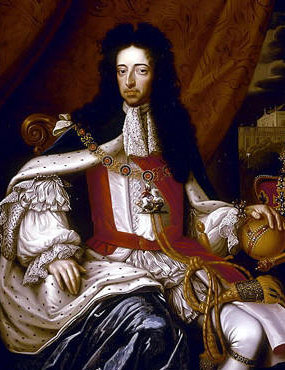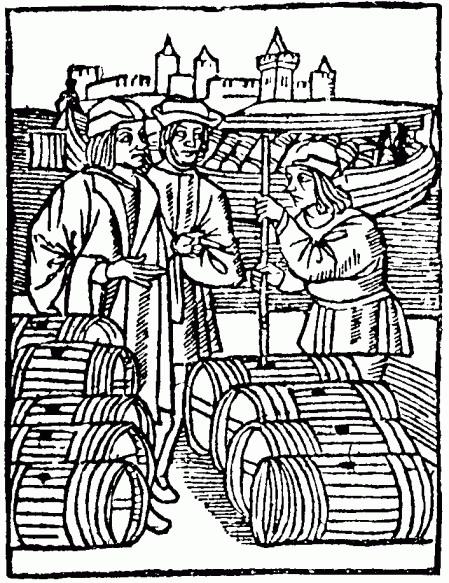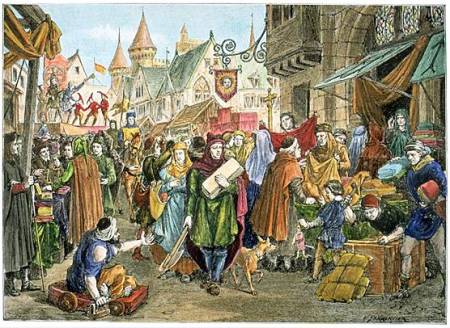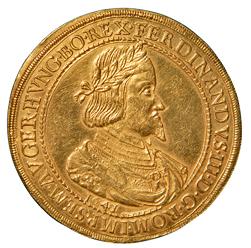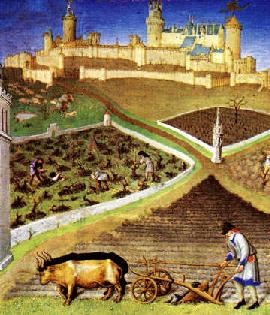Here is the list of preapproved sessions of the Second Latin American Economic History Congress (CLADHE-II), to be held in Mexico City on February 3-5, 2010. To submit a paper to any of the sessions, you have to go here.
Glorious Revolution Week, the end: are institutional economics a gamy theory?
August 15, 2009The Glorious Revolution is a cardinal event in the eyes of modern economic historiography. Not only did it provide the setting for the Industrial Revolution, but it also became a textbook example of the impact of institutional change upon the economy. The 1989 article by North and Weingast is said to be the most quoted in the discipline. Indeed it formalized the process of historical change, but also strongly hinted at what good institutions should be. Read the rest of this entry »
North D. and Weingast B. (1989) The economic impact of institutions
August 14, 2009North, Douglass C. and Barry Weingast (1989) “Constitution and Commitment: The Evolution of Institutional Governing Public Choice in Seventeenth-Century England”, The Journal of Economic History, 49/4: 803-832.
Disclaimer: this summary is written by the contributors of the blog and not by the author of the article. Any mistake is Manuel’s fault (and he shall be punished).
“Put simply, successful long-run economic performance requires appropriate incentives not only for economic actors but for political actors as well. Because the state has a comparative advantage in coercion, what prevents it from using violence to extract all the surplus?” Read the rest of this entry »
Lovejoy P. and Richardson D. (2001) Pawnship in West Africa during the slave trade
July 7, 2009Lovejoy, Paul E. and Richardson, David (2001) “The Business of Slaving: Pawnship in Western Africa, c.1600-1810”, The Journal of African History, 42/1, 67-89.
“The institution of pawnship, specially the use of people as collateral for credit, helped underpin the Atlantic slave trade” (p.68). Leaving people as collateral solve the trust issue attached to credit (p.69).
Several types of pawnships existed (p.70). Europeans often reported the habit for one to pawn himself if too poor to survive. People also often offered themselves as collateral for a credits and if they failed to repay, they became slaves for debt (p.71). In domestic trade the use of pawns to guarantee a debt seem to have been fairly common in 18th-century West Africa. The institution seems to have been indigenous (p.72). Read the rest of this entry »
Dittmar J. (2008) The emergence of Zipf’s Law
April 2, 2009Dittmar, Jeremiah (2008) “Cities, Institutions, and Growth: The Emergence of Zipf’s Law”, Job Market Paper.
This paper is available on line.
Introduction
Zipf’s Law is a simple power law holding that the number of cities with population greater than N is proportionate to 1/N, this results in a log-linear relation between city population and city size rank (p.2). However, as shown by pre-modern European urban history, this law is not universal nor a-temporal (p.3). This outlying is very significant since economists have recognized that “there is an optimal level of urban concentration and that both over- and under- concentration can be very costly in terms of productivity growth” (p.4). When respecting the Zipf’s Law, city growth is considered random, so what prevented “normal” urban expansion and what later on made it possible? Read the rest of this entry »
Mitchener K. and Ohnuki M. (2009) Capital integration in Japan
March 15, 2009Mitchener, Kris James and Ohnuki, Mari (2009) “Institutions, competition and capital market integration in Japan”, The Journal of Economic History, 69/1, 138-171.
Introduction
The causal relationship between finance and economic growth makes “understanding the factors that encourage capital market development […] a key question” (p.138). Meiji-era policy-maker recognized that “the geographical mobility of capital [was] critical to allocative efficiency” and that to modernize the economy they had to forge an integrated capital market (p.139). Read the rest of this entry »
Gelderblom O. (2005) The decline of fairs and merchant guilds
March 13, 2009Gelderblom, Oscar (2005) “The decline of Fairs and Merchant Guilds in the Low Countries, 1250-1650″, Economy and Society in the Low Countries before 1850, Working Paper 1, 47p.
This article is available on line
Between the 11th and 13th century, during the Commercial Revolution, long-distance trade in Europe expanded rapidly thanks to organizational improvements such as fairs and merchant guilds (p.1). In fairs, merchants increased their chance to find business partners and benefited from the protection and the contract-enforcement abilities of the local jurisdictions. Merchant guilds were associations of traders from the same origin present in a foreign market and united in order to increase their bargain power with local authorities (p.2). Read the rest of this entry »
Epstein S. (2000) States and fairs
March 6, 2009Epstein, Stephan R. (2000) “States and fair”, in Freedom and Growth. The rise of states and markets in Europe, 1300-1750, Idem, Abingdon: Routeledge, 73-88.
New fairs everywhere
During the second half of the 14th century and the 15th century a great number of fairs were created around Europe. Testimony to their success, most of them lasted until the 1500s and beyond. They responded to the problems posed by the lack of “cheap and flexible system of distribution” over the continent, specially between the depopulated cattle-grazing uplands and the meat-, wool- and dairy-consuming towns (p.75). Livestock fairs where thus “often set up at the foot of major mountain passes”, Besançon for instance (p.76). Read the rest of this entry »
Brenner, R (1976) Class struggle and development in pre-industrial Europe
February 9, 2009Brenner, Robert (1976) “Agrarian class structure and economic development in pre-industrial Europe”, Past and Present, 70/1, 30-75.
Introduction
In this article, the author offers one of the most commented “general interpretations of the processes of long-term economic change in late medieval and early modern Europe”. He rejects the rigid Malthusian theory based solely on the laws of supply and demand and introduces class struggle as the key element driving European pre-industrial economic history (p.30). Read the rest of this entry »
Molho A. and Ramada Curto D. (2003) Merchant networks in the early modern world
January 29, 2009Molho, Anthony and Ramada Curto, Diego (2003) “Les réseaux marchands à l’époque moderne”, Annales HSS, 58/3, 569-579.
The analysis of the trading networks fits in the comparative history of the world advocated by Fernand Braudel. The unity of the worlds considered (such as the Mediterranean for instance) does not depend on the geomorphic factors, but on the peoples who tie separate regions together. The motivation of these people comes from trade. But what is the nature of these commercial networks? How do they work and interact with the other components of the economy? Read the rest of this entry »
Bosker M., Buringh E. and van Zanden J.L. (2008) Why did Europe overtake the Arab World?
January 27, 2009Bosker Maarten, Buringh Eltjo and van Zanden Jan Luiten (2008) “From Baghdad to London. The dynamics of urban growth in Europe and the Arab world, 800-1800”, CEPR.



Introduction
In this article, the authors wonder how did Europe rose from insignificance to global domination from 800 to 1800, while the relative importance of the neighbouring Muslim regions decreased. They try to define the “preconditions for the genesis of the modern economic growth” (p.3) and to understand the roots of the European modernity. When did Europe and the Arab world diverge (p.4).? Read the rest of this entry »





 Posted by Manuel A. Bautista-González
Posted by Manuel A. Bautista-González 
